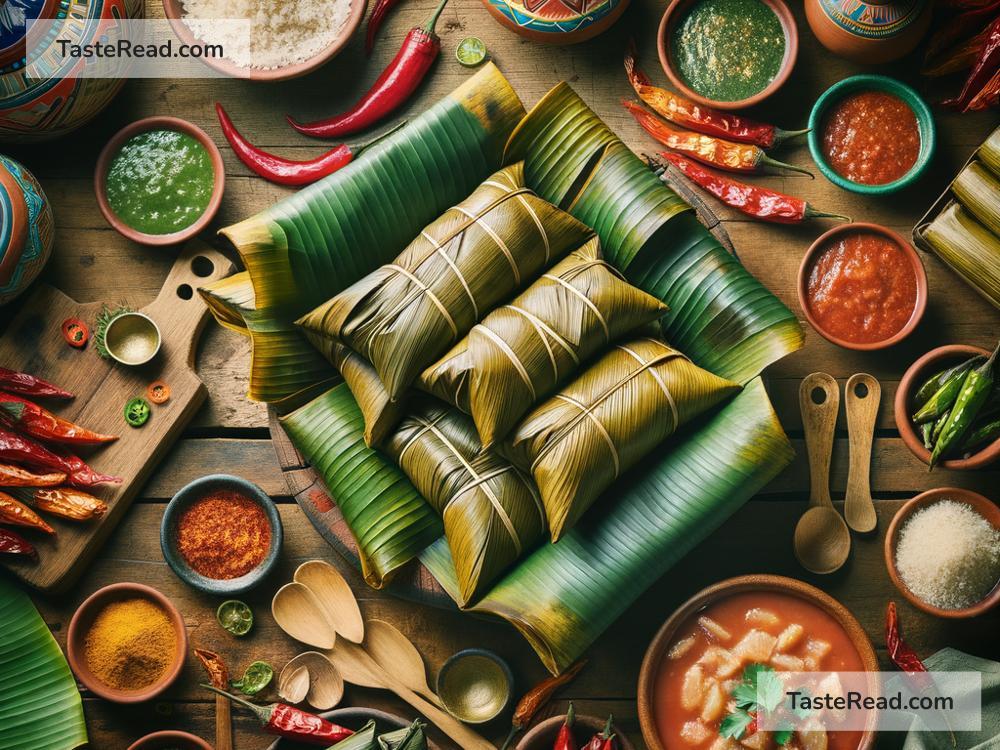Celebrating the Creative Revival of Traditional Latin American Tamales
Tamales have always been a beloved food in Latin America. For centuries, this humble dish has been at the heart of family gatherings, festivals, and celebrations. These small packets of joy, made with corn masa (dough) and wrapped in banana leaves or corn husks, are more than just food—they carry the rich history, culture, and traditions of the people who create them. Now, tamales are going through an exciting revival as modern chefs and home cooks blend innovation with tradition, breathing new life into this ancient dish.
What Are Tamales?
Tamales are one of the oldest dishes in Latin American cuisine. Experts say they go back thousands of years, to the days of ancient Mayan and Aztec cultures. These civilizations used tamales as portable food for warriors and travelers—a convenient, ready-to-eat meal that could be carried long distances. Traditionally, tamales are made by spreading masa (a dough made from ground corn and water) onto a leaf or husk, adding a filling (like meat, vegetables, cheese, or fruit), wrapping it up, and steaming it until soft and flavorful.
Each country in Latin America has its own version of tamales. In Mexico, tamales may be filled with spicy pork or sweet chocolate. In Guatemala, tamales are often larger and include ingredients like tomatoes and olives. In Venezuela, tamales are called “hallacas” and feature a mix of meats seasoned with raisins, capers, and spices. No matter where they come from, tamales are a symbol of family and tradition, made with love and care.
The Traditional Roots of Tamales
Tamales are more than just a dish—they’re part of the culture. Recipes for tamales are often passed down from grandparents to parents to children. They’re made for special occasions, such as Christmas, Day of the Dead, or weddings, where families come together to prepare them. Making tamales is often a labor of love that involves not just cooking but also spending time with loved ones. For many Latin American families, tamale-making is a cherished ritual that strengthens bonds and keeps traditions alive.
But tamales don’t just represent family—they’re also tied to the land. Corn, the main ingredient in tamales, is a sacred crop in Latin American cultures, as it was a staple food for ancient civilizations. To this day, corn remains the soul of Latin American cuisine, and tamales are one of the purest ways to honor this crop.
A Creative Revival: Tamales in the Modern World
While traditional recipes will always have a place in the hearts of tamale lovers, the dish is experiencing a creative revival. Today, chefs, food lovers, and even street vendors are experimenting with new flavors, shapes, and presentations to give tamales a fresh twist while keeping their cultural roots intact.
-
Global Ingredients in Local Recipes
Tamales are embracing global flavors. Innovative cooks have started blending traditional masa with unexpected fillings like curry-spiced chicken, smoked tofu, or roasted vegetables with a hint of balsamic vinegar. Sweet tamales, too, are getting creative with fillings like Nutella, tropical fruits like mango, and even matcha green tea. These new combinations bring together the old and the new, offering tamales to people with different tastes. -
Fusion Cuisine
Tamales are finding their place in fusion cuisine, where two food cultures come together to form something entirely new. In some U.S. cities, for example, chefs have combined tamales with barbecue flavors, incorporating pulled pork and smoky sauces. Other creative cooks are putting an Italian spin on tamales by adding mozzarella, basil, and tomato sauce for a “pizza tamale.” Fusion tamales honor the timeless tradition while appealing to modern, global audiences. -
Plant-Based Options
As vegetarian and vegan diets grow in popularity, tamales have adjusted beautifully. Plant-based tamales are becoming more popular, with fillings like spiced black beans, mashed sweet potatoes, and sautéed greens. Some cooks even swap out the traditional lard in the masa for healthier alternatives like coconut oil, making tamales more inclusive and accessible to people with different dietary preferences. -
Artistic Presentation
Traditional tamales are simple and rustic, but modern chefs are turning tamales into works of art. Fancy restaurants are serving tamales wrapped in colorful husks, topped with microgreens, drizzles of sauce, and artistic plating that elevates the dish to gourmet status. They’re proving that tamales can be both comforting and elegant.
Why This Revival Matters
This creative revival of tamales is more than just an exciting food trend—it’s a way to celebrate and preserve Latin American culture while moving forward into the future. Tamales are deeply rooted in history, but they remain relevant and adaptable, showing the world that traditional food can thrive in new and innovative ways.
At the same time, this revival gives younger generations a chance to connect with their heritage. In a world that’s changing fast, food traditions like tamales remind us where we come from. Whether you make traditional tamales with your family or experiment with new flavors at home, you’re preserving an important part of Latin American identity.
Tamales: A Gift That Keeps Giving
Tamales are more than a meal—they’re a celebration. They bring people together, tell stories, and symbolize creativity and resilience. As tamales continue to evolve in the hands of talented chefs and passionate home cooks, they remain a gift from the past that we can cherish in the present and pass on to the future. Let’s celebrate this revival and enjoy tamales in all their forms—traditional, modern, and everything in between.


